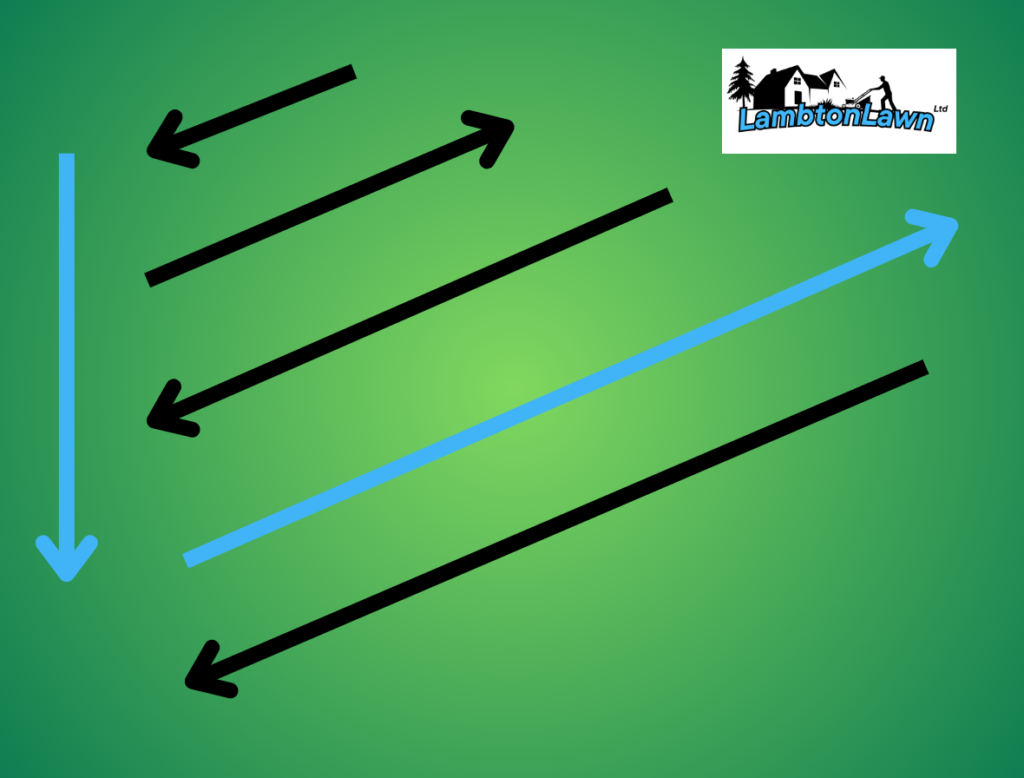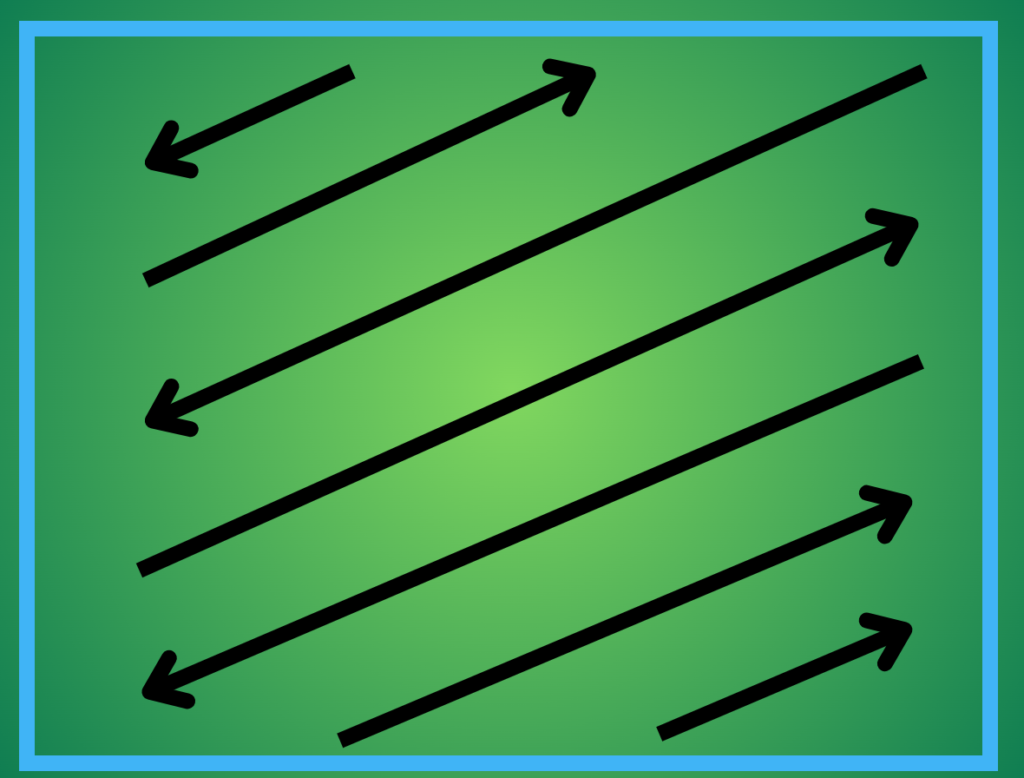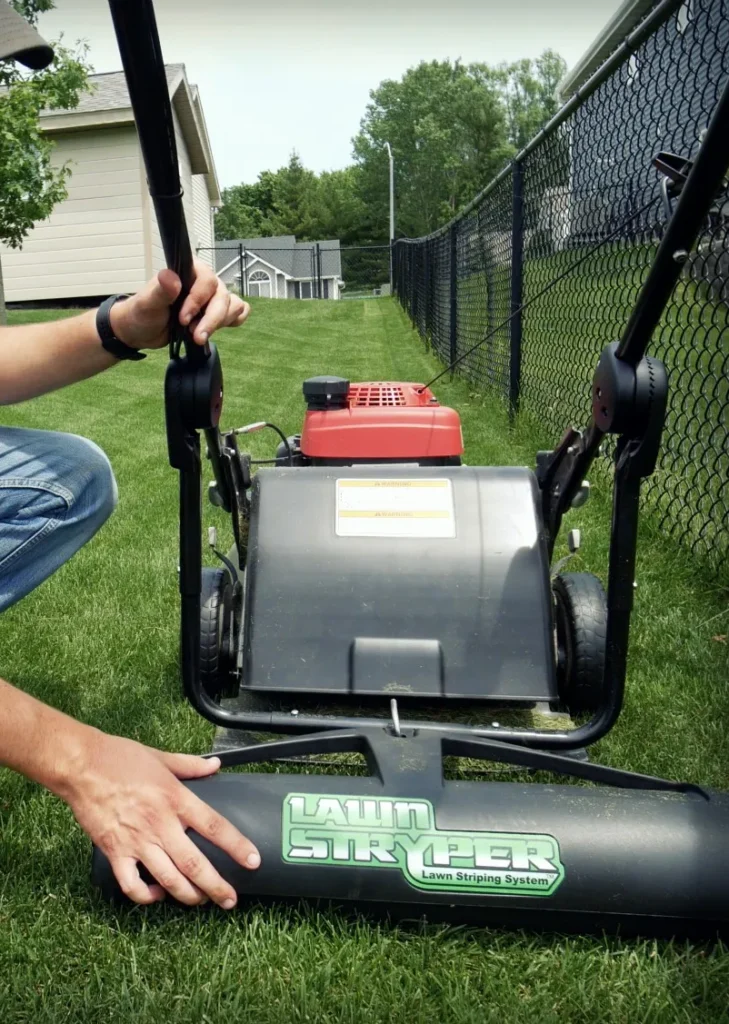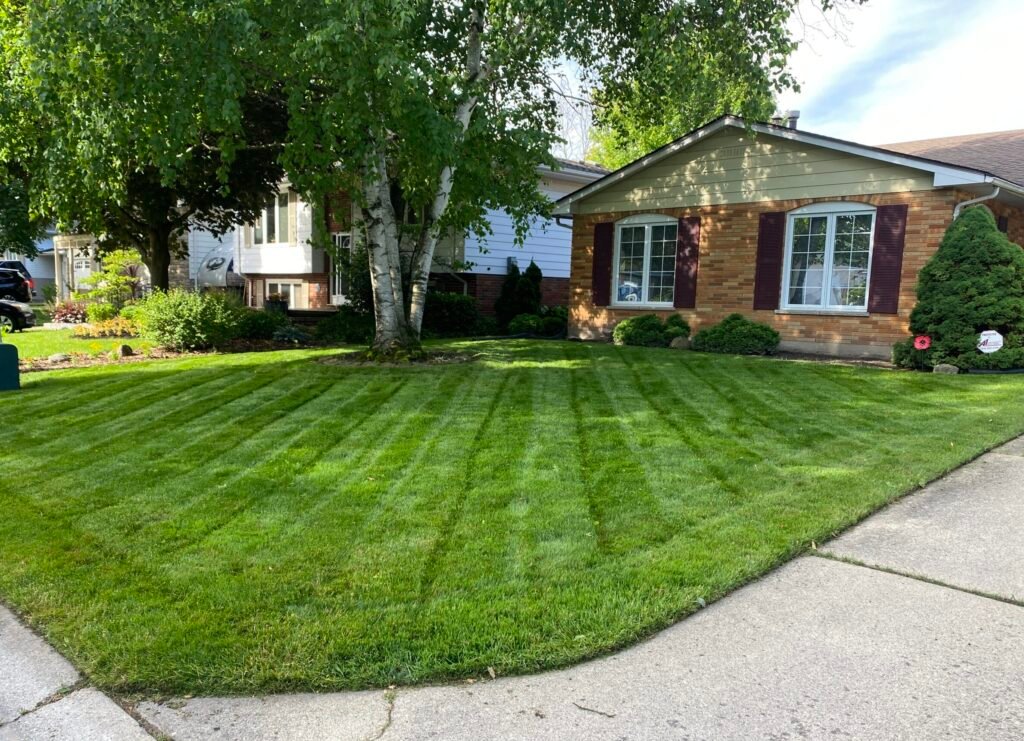Want to know how to mow perfect patterns in the lawn.
In a general sense, mowing perfect patterns in your lawn comes down to a few key tips and a little strategic thought.
At Lambton Lawn, we mow a lot of grass, so we wanted to share a few tips that can help you make your neighbourhood jealous of your lawn. Let’s get started!
How Do We Create Lines In The Lawn? What Are We Seeing?
When we see those beautiful patterns in the lawn, we are actually seeing the contrast between sunlight hitting the grass blades at two different angles.
As we push our lawn mower in one direction, we are folding the grass down in the same direction. When we reach the end of each pass and switch directions, the grass is folded in the opposite direction, creating a contrast of light reflection from one pass to another.
In a nutshell, thats how it works!
However, the rest of this article is going to teach you how to to mow perfect patterns in your lawn and maximize the effect of folded grass blades.
Healthy Grass Shows Better patterns
I’m going to assume that most of you already have a half decent lawn and are looking for some actionable advice.
However, I might as well explain why a healthy lawn makes a tremendous difference in how good your patterns can look.
Cultural practices such as fertilizing, watering, aeration and consistently mowing at the right height will help your lawn resit the normal stress it takes from being mowed every single week.
When your lawn is healthy, the contrasting patterns of the folding grass will pop.
A lawn that isn’t so thick and healthy will not give the same dramatic effect because the grass blades can’t fold and rest on each other. Your eyes will be drawn to the gaps and bare areas of the lawn and it’ll eliminate the effect completely if its patchy enough.
Line Trim Before You Mow Your Lawn
One tip we’ve learned as lawn care landscapist that help us mow perfect patterns in the lawn, is to line trim before you begin mowing. Now I personally don’t follow this rule every time, it really depends how long the grass is your trimming.
If you really need to line trim, and you want nice patterns, I would definitely line trim first.
The last thing you want is to finish your beautiful patterns and then you realize all the long messy grass from trimming afterwards is just laying on top of your beautifully mowed masterpiece.
How To Handle Obstacles To Keep Your Lines Straight.
You may find it’s difficult to get back on track perfectly straight when your in the path of an obstacle, such as trees or gardens.
We’ve found the easiest way to keep your lines straight is to make your first pass right along side the object.
This acts as a guide for the next pass. Follow the mowers wheel trail in the opposite direction and then go around the object, staying close to the outside. Then return to the wheel trail and finish the pass.

It helps to look at something on the opposite side of the lawn to walk towards as your mowing the first pass.
After you complete the first pass around the object, begin the next pass and stay close the object again. Then repeat this process until the obstacle is no longer in the way.
Seems simple right? thats because it is. Its little tips like this that’ll get you the perfect results with hardly any effort.
Handling Fences And Hard Turn-around Areas
This is a pet-peeve of mine, but I believe this is the best way to handle this…
I start by mowing the perimeter of the fenced in area. In fact, I do two perimeter passes. The idea of mowing the perimeter first is to create a buffer zone that gives you enough room to turn around and line up your next pass.
This really helps position your mower straight on the next pass.
Trace A Directional Pass To Cross The Lawn.
Often times we find ourselves in a position where we need to cross the lawn to be mowing in the right direction for the next pass.
Simply trace a pass in the same direction to avoid folding the grass in the wrong direction. It’s good to remember which direction your first pass was so you can follow it later.

As you can see from this diagram, the blue lines indicate a situation where tracing the first pass was needed to cross the lawn to make the next pass in the opposite direction.
Cover Your Turn-around Marks With A Perimeter Pass
After you finish all your passes, you may notice some twist marks where you turned around for each pass.
Thats okay because its easy to fix, and by doing this extra step you’ll really set your lawn apart form the others on your street.

For a satisfying clean look, start a final pass around the perimeter of the lawn to seal the deal.
Most people don’t do this, but its absolutely worth doing because it only takes a minute to do and it looks really good.
Fold The Grass Down More, Get Dramatic Patterns With A Lawn Stryper
The more substantial the folding of the grass, the greater the result.
S&B Lawn Systems has just the product, Its called a “Lawn Stryper”
A lawn stryper is essentially a weight that drags behind your mower and folds the grass down further. We use our Lawn Stryper in a commercial setting, and we really love this product.

Good build quality and very easy to use, we definitely recommend checking out the Lawn Stryper.
Recap & Conclusion, How To Mow Perfect Patterns In The Lawn
Book mark our site and refer back to this page. This article is everything you need to make mowing perfect patterns in the lawn.
- Good lawn care practices
- Line trimming before mowing
- Handling obstacles to keep your lines straight.
- Tracing directional passes
- Covering turn-around marks with a perimeter pass
- Folding grass blades more with the Lawn Stryper






